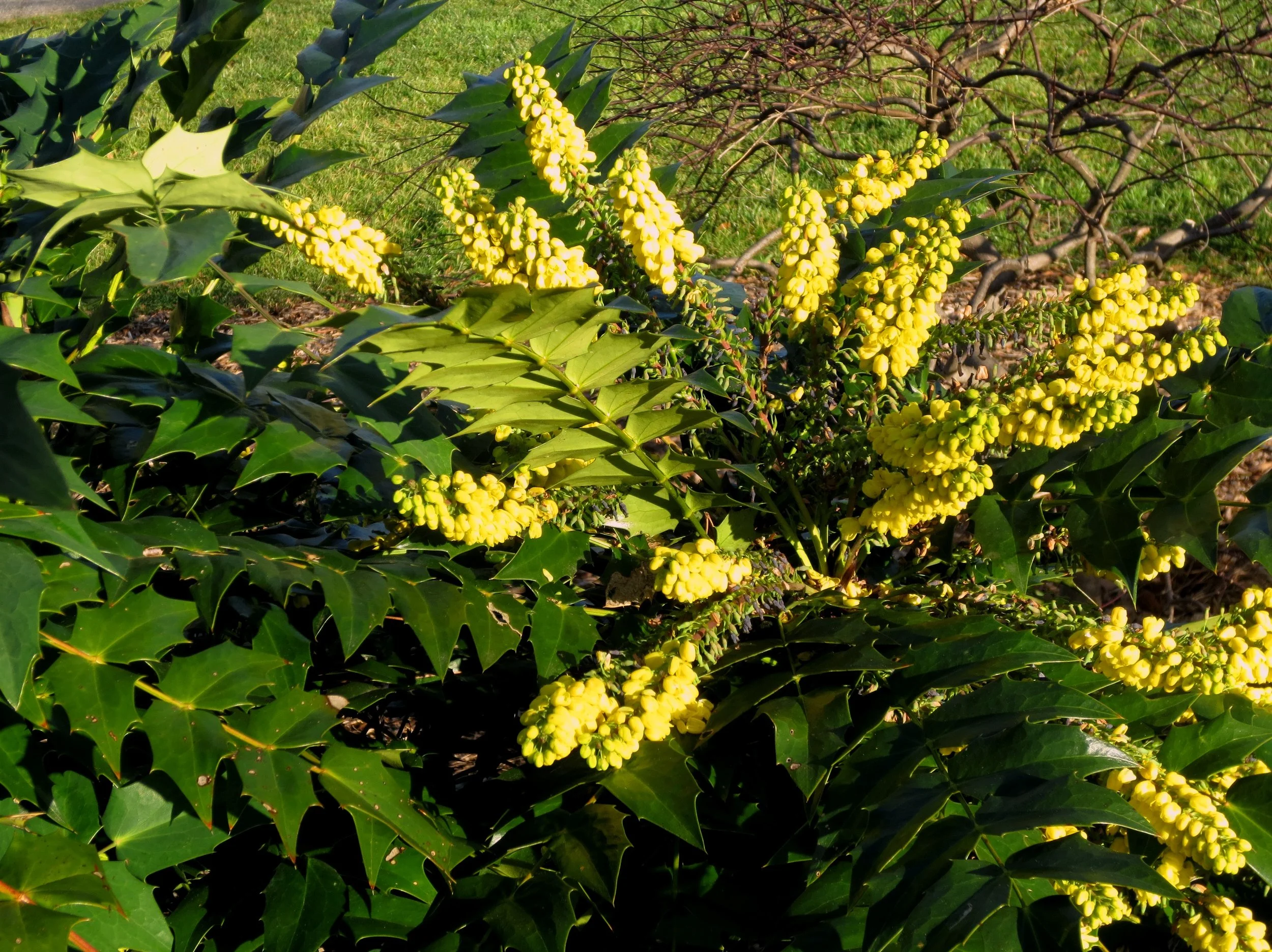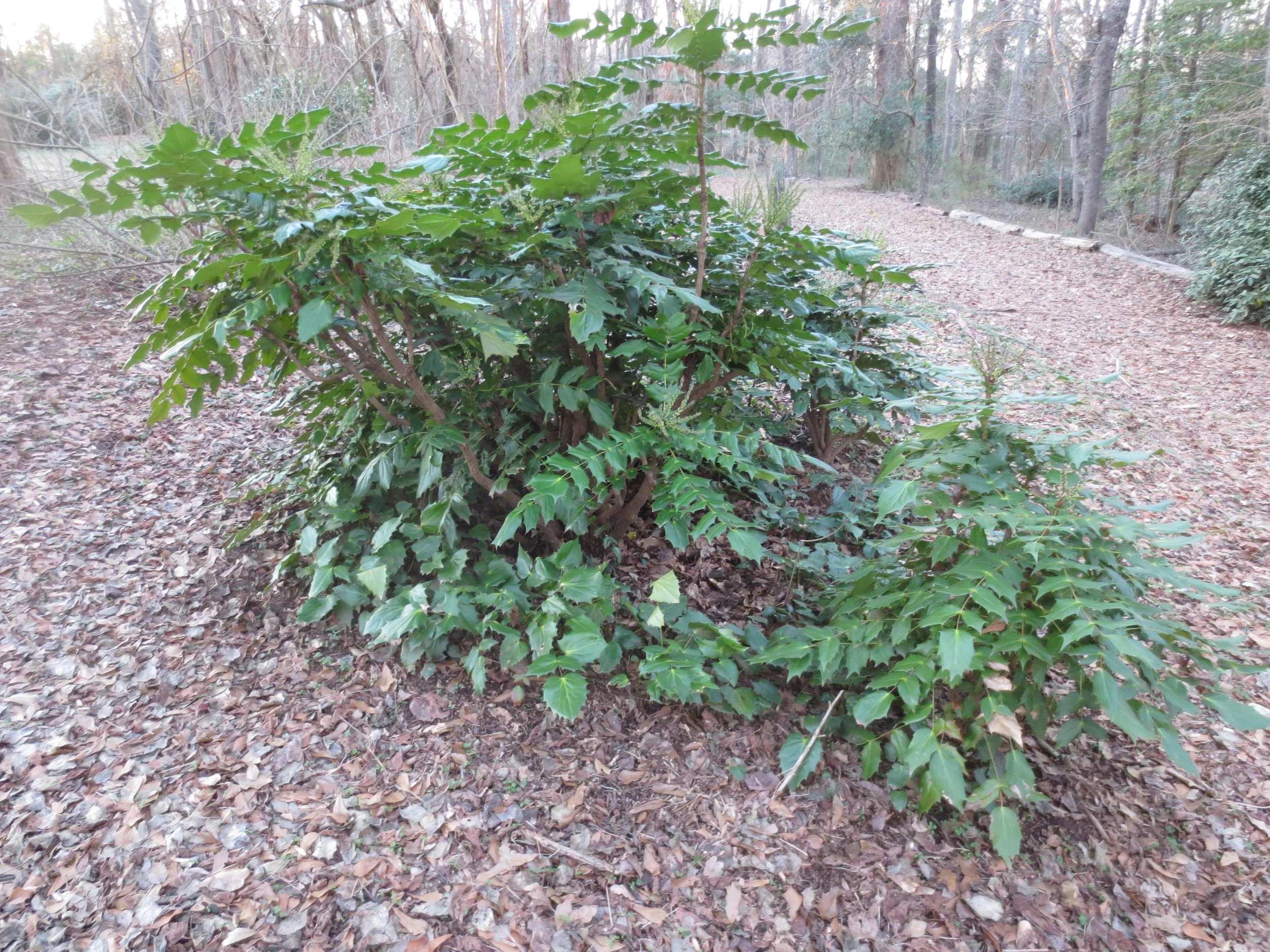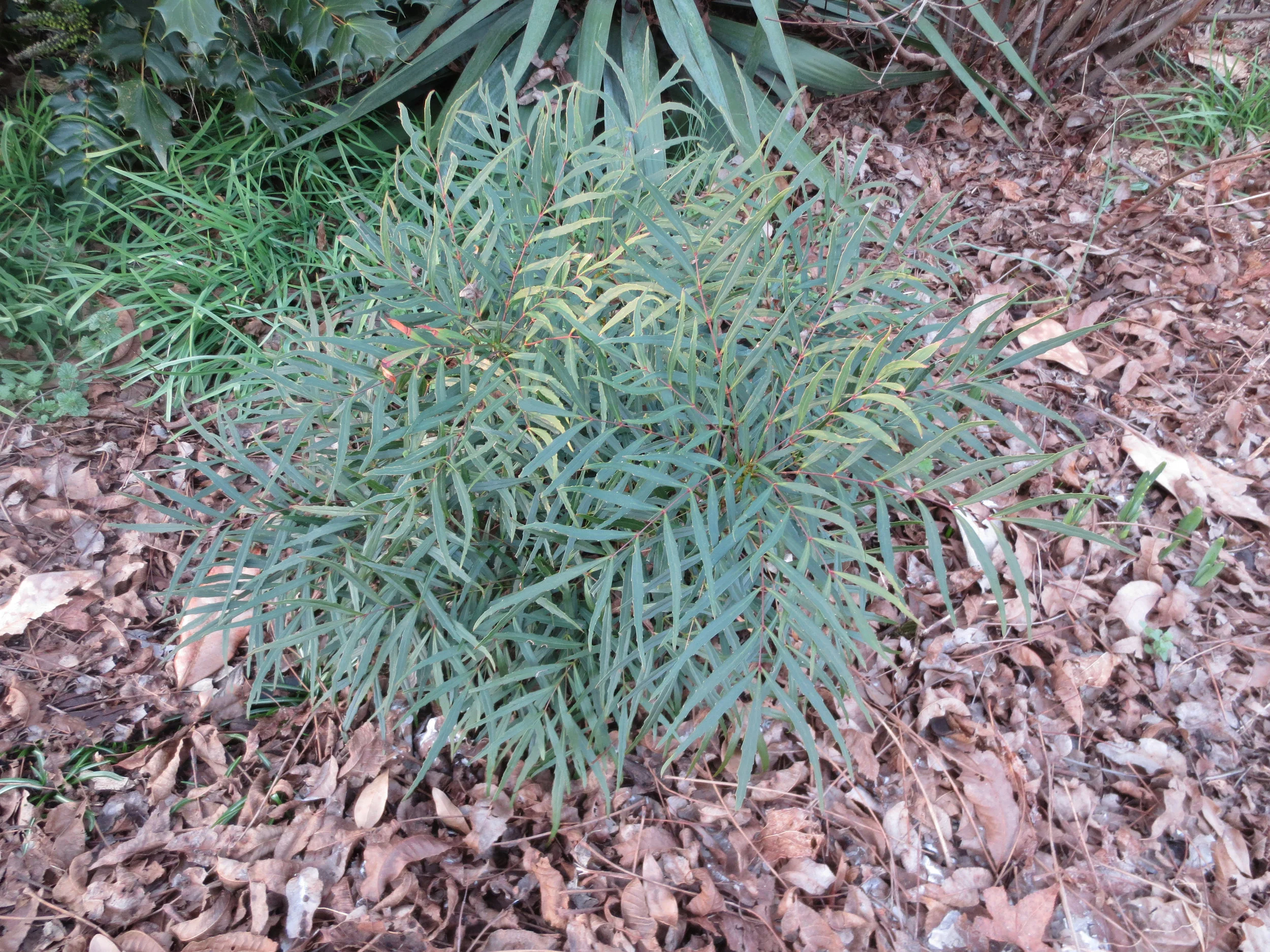“The dead of winter.” That phase accurately describes the Mary Snoddy garden right now. My dormant mostly-Bermuda lawn is the color of a manila file folder. The flower beds look forlorn. Amid all this dreariness, the lemon yellow blooms of Mahonia bealei glow like a beacon in the winter landscape.
The common Mahonia (pronounced mah-HOE-nee-uh BEEL-lee-eye) originally hails from China, but has spread itself across the southeast in damp, shady areas. This shrub has thick, leathery leaves (common name is Leatherleaf Mahonia) shaped like giant holly leaves, complete with sharp points. Should you injure the bark either through accident or pruning, you will find the underlying tissue is a bright yellow, just like its distant cousin, the barberry. It is evergreen, but a few leaves may turn red or orange and drop in autumn.
The plant is not included in the List of Invasive Plant Pest Species compiled and revised in 2014 by the South Carolina Exotic Pest Plant Council, but NC State University includes it in their Invasive Exotic Plants of the Southeast, and recommends control via a combination of fruit removal, drastic pruning, herbicide, and root ball removal. I take this to mean that they feel the shrub should be removed entirely. Invasive.org indicates that this tough customer is on the bad list in South Carolina, Alabama, Tennessee and Georgia.
One does not need a horticulture degree to realize that this hardy specimen has invasive tendencies. The fragrant blooms are followed by clusters of green berries that mature to an attractive blue-purple shade, often with a powdery dusting described by botanists as “glaucous.” The berries are favored by birds. I suggest that you avoid line-drying any laundry during the 2-3 weeks that ripe berries are present (unless, of course, you prefer your clothing and bed linens with random purple stains). Any berries not removed by birds fall to the ground, where they germinate readily. I do a twice-yearly hoeing to remove all these unwanted seedlings. Otherwise, a thicket would develop.
Mature shrubs will grow 5-10 feet tall, with a 4 foot spread. They have a tendency to become lanky, with bare lower stems, similar to species Nandina. Counteract this by pruning a few of the leggy stems each year down to a height of six inches. It looks drastic, but they will throw new growth at the cuts and look much better.
There are some newer introductions of Mahonia that may be less invasive. ‘Winter Sun’ is beautiful and fragrant. On winter days with temperatures above 50 degrees, the honeybees swarm around the sweet blooms. Introduced in 2006, Mahonia eurybracteata ‘Soft Caress’ grows in the same damp shade as its cousin, but the foliage is soft and finely cut, resembling bamboo. It is smaller (3 feet, maybe) and perfect for an Asian garden. It has the same yellow flowers, but mine bloom in September/October rather than January/February like the Leatherleaf. Mahonias put down some deep roots, which means that mature specimens are somewhat drought tolerant (yay) but difficult to relocate or remove (boo). All Mahonias are deer resistant.
Photos: Left - ‘Winter Sun’; Middle - The beginnings of an invasive thicket; Right - ‘Soft Caress’


